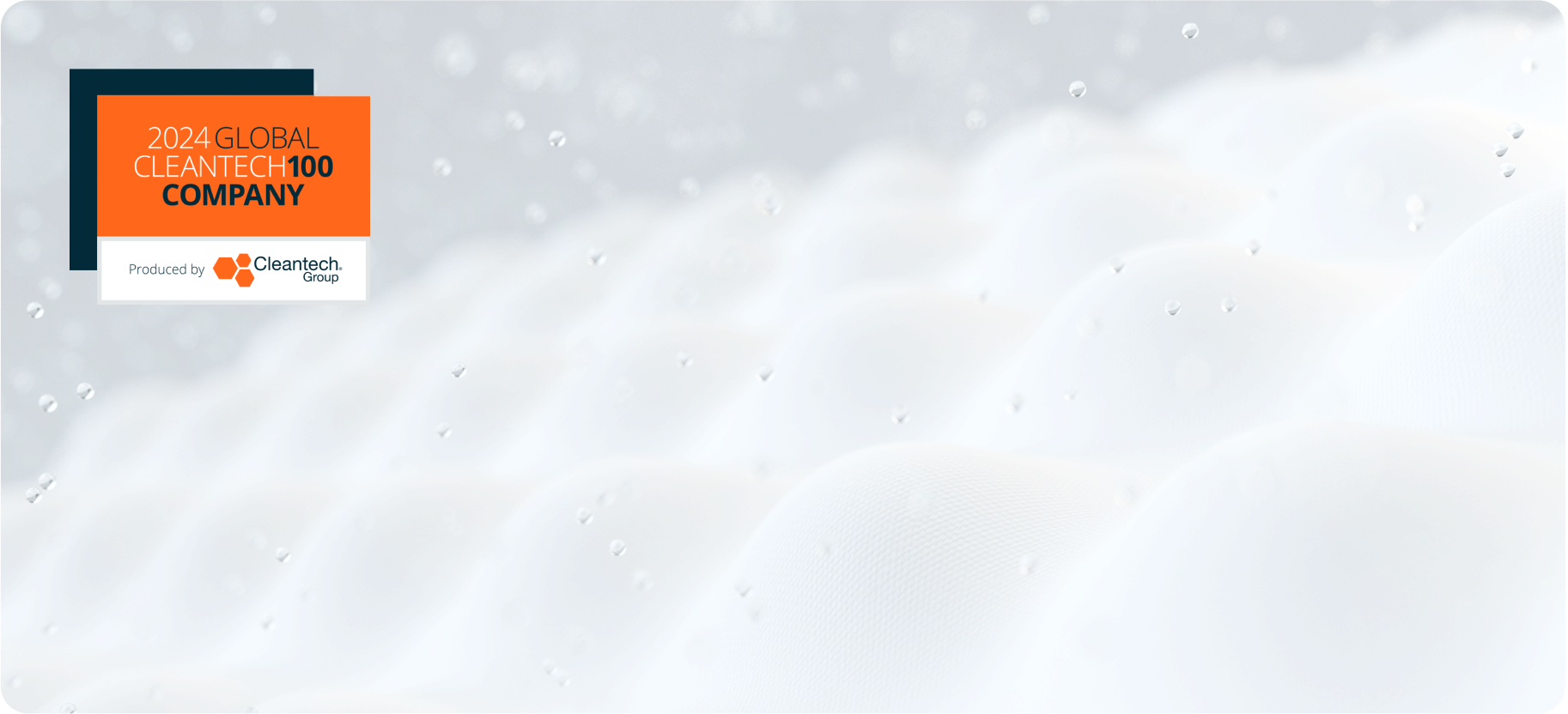From a chemistry perspective, polyols are a type of alcohol containing multiple hydroxyl groups. Ethanol is an example of an alcohol; it has two carbons and one hydroxyl group, polyols have hundreds or thousands of carbons and many, many hydroxyl groups. There are three main types: polyether, polyester, and polycarbonate.
In manufacturing, polyols are extremely versatile key ingredients that go into a range of goods used by billions of people every day — including food, pharmaceuticals, cars, clothes, construction materials, mattresses, and more.
With this in mind, the word polyol may have different and more nuanced definitions based on whether someone is describing polyols for food and beverage applications versus material science (i.e. polymer chemistry).
In this article, you can read about how polyols are used, different types of polyols, how they are made, how they are finetuned to improve certain products, and innovative new polyols that are emerging in response to consumer demands for more sustainable solutions.
How polyols are used
Applications for polyols
Polyols can be used to create polyurethane foams and coatings and, therefore, have applications in a wide variety of industries such as:
- Furniture and mattresses
- Paints, coatings, and adhesives
- Automotive
- Footwear and apparel
- Insulation and construction materials
For example, polyols can be used in combination with isocyanates to produce polyurethane foams for mattresses. Similar foams are used in cars in the seats to make sure they are comfortable and in automobile interiors to dampen sound. You will even find polyurethanes in the soles of your shoes, where they provide cushion to your step.
In addition to playing a role in making foams, polyols can also act as sweeteners, thickeners, and humectants. As a result, they also have a range of applications in food and beverage, pharmaceuticals, and cosmetics.

Types of polyols
Polyether polyols
The polymerization of propylene oxide or ethylene oxide creates polyether polyols. The exact structure of the polyether can be tailored to the final application required. They are highly stable to water, weak acid and bases. They tend to have high molecular weight.
Polyester polyols
Reacting dicarboxylic acids (or their derivatives) with certain alcohols produces polyester polyols. Specialist polyester polyols, such as polycaprolactone, are produced by ring-opening reactions of cyclic esters. These polyols are more susceptible to hydrolysis (breakdown due to a reaction with water) than polyether polyols. They also tend to have lower molecular weight than polyether polyols.
Polycarbonate polyols
Polycarbonate polyols are actually a type of polyester polyol but the ester is a carbonic ester. This difference means that these polyols are much more resistant to hydrolysis than regular polyester polyols.
How polyols are made
Manufacturing polyols for food-based applications
Polyols that are used in food-related applications are commonly produced through hydrogenation of sugars or starches. This process involves the reaction of sugars or starches with hydrogen gas at high temperatures and pressures and in the presence of a catalyst, typically a metal catalyst like nickel or palladium.
During hydrogenation, the double bonds in the sugar molecules are saturated with hydrogen atoms, causing polyols to form.
After the reaction, the polyols are purified through distillation or crystallization to achieve a high-purity product.
Manufacturing polyether polyols for polyurethane foam and other applications
Polyols used in polyurethane foam and other non-food-related applications are often produced via the polymerization of alkylene oxides. In this method, either propylene oxide (PO) or ethylene oxide (EO) is reacted with a starter compound containing active hydrogen atoms, such as glycerol or dipropylene glycol.
The reaction takes place in the presence of a catalyst, usually an alkaline catalyst like potassium hydroxide, which facilitates the addition of the oxide to the starter molecule. The result is the formation of polyols with multiple hydroxyl (OH) groups. These polyols serve as the polymeric backbone for polyurethane foam production. Isocyanates, along with additional ingredients such as blowing agents and catalysts, are then mixed with the polyols to create the foam.
Finetuning polyols for performance
Adjusting the molecular weight of a polyol can change its characteristics and, as a result, change how it performs in a specific application. For example, the foam in a memory foam mattress is made from a blend of polyols with higher and lower molecular weights than a regular mattress. The molecular weight can affect resilience, or how long it takes a mattress to rebound after you press your hand into the foam.
Adjusting the carbon linkages in polyols can also change performance. For example, some polyols made with captured carbon instead of fossil-based carbon deliver better elasticity and strength in memory foam.
You can find a similar story in other applications like paints and coatings, where adjusting molecular weight and the distribution of polyols influences the viscosity, flow properties, and film thickness. Additionally, changing the chemical structure of polyols by incorporating functional groups such as carboxyl, or epoxy groups can improve adhesion, crosslinking, and chemical resistance of the coating.
Sustainable polyols
While polyols have traditionally been made from petrochemicals like PO or EO, new generations of polyols are emerging in response to consumer demand for products with lower carbon footprints and less environmental impact. Increasingly, polyols are made from renewable carbon sources such as captured CO2, bio-based polyols, and polyols made from recycled content.
Polyols made from captured CO2
Polyols made from captured carbon dioxide, often referred to as “CO2-based polyols,” represent an innovative approach to carbon utilization and sustainable chemistry. These polyols are synthesized by incorporating carbon dioxide (CO2) into the chemical structure, typically through a reaction known as CO2 epoxidation or carboxylation.
In CO2 epoxidation, carbon dioxide reacts with an epoxide compound (such as PO or EO) in the presence of a catalyst to form cyclic carbonates. These cyclic carbonates can then undergo further reactions to produce polyols with multiple hydroxyl groups, effectively sequestering CO2 within the polymer structure.
Carboxylation involves the direct reaction of CO2 with compounds containing active hydrogen atoms, leading to the formation of carboxylic acids or their derivatives. These carboxylic acid derivatives are then converted into polyols through various chemical transformations.
Polyols made from captured CO2 offer several potential benefits, including carbon dioxide utilization, reduced dependency on fossil fuels, and the potential to mitigate greenhouse gas emissions. Additionally, they can exhibit similar or superior properties to conventional polyols, making them suitable for a wide range of applications.
Bio-based polyols
Bio-based polyols are derived from biomass sources such as vegetable oils, animal fats, carbohydrates, and lignocellulosic (i.e., wood-based) materials. The bio-materials either partly or fully replace traditional fossil-based feedstocks.
There are several methods for producing bio-based polyols including transesterification, hydroformylation, polycondensation, and depolymerization (i.e., derived from biomass such as wood or agricultural residues).
Recycled polyols
Recycled polyols are polymeric materials derived from post-consumer or post-industrial waste sources, offering a sustainable solution to reduce waste and promote circular economy principles. These polyols are typically obtained through the recycling of polyurethane products, such as foam mattresses, furniture cushions, automotive parts, and insulation materials.
The process of producing recycled polyols involves several steps: collection and sorting, chemical depolymerization, purification and fractionation, and reformulation and processing.
To learn more about polyols, or discuss sustainable polyols made with the Econic process, please contact our team at enquiries@econic-technologies.com.


